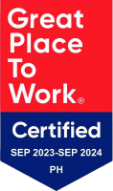Home Healthcare Trends To Watch For In 2024
December 2023

The home healthcare industry is constantly evolving due to technological progress, regulatory demands, and patient requirements. The integration of cutting-edge innovations, such as Artificial Intelligence, is not only reshaping how home healthcare services are delivered but also revolutionizing the overall patient experience. However, the rise in technological integration brings a heightened focus on cybersecurity to combat the home healthcare industry’s vulnerability to cyber threats.
Simultaneously, the home healthcare industry is navigating global economic uncertainties, including growing labor costs, recruitment and reimbursement challenges, and labor shortages, adding additional complexity to the industry.
As the industry evolves, staying informed about the latest and upcoming trends becomes imperative for home healthcare professionals and organizations. In this article, we examine the anticipated trends that will influence the home healthcare industry in 2024.
Labor Shortages
Labor shortages for home healthcare will continue in 2024 as the demand for home healthcare services increases because of the aging population. In 2024, providers must restructure their procedures and eliminate inefficiencies to allocate scarce resources more effectively toward patient care. This entails delegating non-clinical tasks to support staff and automating processes that consume caregivers’ time. For example, studies indicate that nurses dedicate much of their time to documenting, coding, and reviewing information in electronic medical records (EMRs) rather than focusing on direct patient care. Additionally, home healthcare providers can delegate administrative tasks to trusted outsourcing companies, allowing caregivers to focus their time on their patients.

Difficulties in Recruiting Caregivers
Home care agencies will face difficulty recruiting caregivers due to their high demand and shortage. Moreover, the home care industry is moving towards a shift in dominance by larger franchises and private equity-backed agencies. This shift presents a potential threat to the competitiveness of independent home care agencies.
Integration of AI Automation
The advancement of AI technology poses a formidable challenge and opportunity for the home healthcare industry in 2024. Utilizing the power of AI opens pathways for real-time insights that can significantly elevate the quality of care and boost patient satisfaction. The challenge lies in effectively leveraging Generative AI to simplify the interpretation of patient results and craft personalized recommendations. Additionally, training Medical AI algorithms using synthetic data from Generative AI can bridge the gap when real-world data is insufficient, all while safeguarding patient privacy.
Increased Security in the Protection of Health Information
Cyber attacks will continue to increase in 2024 as hackers utilize more complex ransomware. Home health agencies are usually targets for these attacks because of the extensive patient information they hold. To combat these cyber-attacks, home health agencies need to do regular risk assessments and back up their data on a separate server.
Advancement of Remote Patient Monitoring
Remote Patient Monitoring (RPM) is an integral part of modern healthcare and will continue to shape the home healthcare industry in 2024. In 2024, we anticipate a sustained trend of integrating telehealth and continuous monitoring for chronic and acute conditions into a digital healthcare platform. Moreover, user-centric advancements will be incorporated in 2024, to make the digital experience more user-friendly, especially for the elderly. Although remote patient monitoring promises to enhance patient care, home healthcare providers face the challenge of optimizing these tools effectively.
Growing Cost of Labor
The rising labor cost for home healthcare providers in the home healthcare sector will continue to increase in 2024 due to inflation and economic recession. This causes an increase in prices for home healthcare services, making it unaffordable for many seniors. In response to the growing challenges of increased labor costs and the subsequent impact on service affordability, home healthcare agencies must strategize and implement measures to enhance efficiency, cut operational costs, and maintain a high standard of care with positive patient outcomes.
Regulatory and Reimbursement Challenges
Home healthcare agencies will continue to face regulatory and reimbursement challenges as Medicare, Medicaid, and Managed Care companies implement reimbursement reductions. Agencies will navigate the task of adapting their operations to meet changing regulatory standards while addressing limitations in the available workforce.
Navigate the 2024 Predicted Home Healthcare Trends with Cliniqon
Navigating the anticipated home healthcare trends for 2024 can be difficult for home healthcare providers. Adapting to changing regulatory requirements, incorporating innovative technologies such as AI automation, and addressing the critical issue of cyber security presents a complex and multifaceted challenge. Furthermore, the persistent challenge of labor shortages and the growing cost of labor calls for strategic solutions to ensure a robust and resilient home healthcare delivery system.
One such solution is Cliniqon. By partnering with Cliniqon, home healthcare agencies can navigate these challenges with ease. Our diverse team brings a wealth of knowledge and experience, ensuring that providers have access to the latest insights and strategies to navigate the evolving home healthcare industry. Cliniqon’s commitment to compliance, helps providers stay ahead of regulatory changes. Moreover, our team is skilled at remote patient monitoring and can address challenges by staying current with technology and tailoring solutions for an efficient monitoring experience. Additionally, our dedicated IT team proactively addresses potential threats and safeguards sensitive patient information, which not only protects data but also fosters trust in the digital era of home healthcare.
Cliniqon also offers a strategic solution to labor shortages and growing labor cost challenges. Our team handles all the administrative tasks, including medical coding, billing, scheduling, intake, order management, and revenue cycle management, removing the administrative burden from providers and allowing them to allocate their time to their patients. Moreover, we handle these tasks at reduced costs compared to having an in-house team, addressing growing wage concerns.
In Conclusion, at Cliniqon, we understand the importance of staying ahead of changing trends and requirements in the home healthcare industry. As a dedicated partner to providers, we go beyond addressing challenges. We aim to empower providers to adapt and thrive in the changing home healthcare environment.
 1800-826-2477
1800-826-2477








